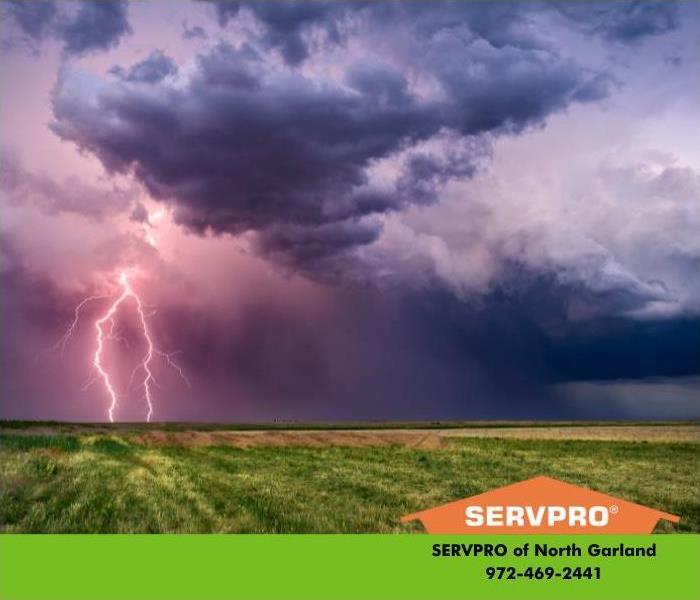Lightening Lessons
11/2/2021 (Permalink)
If you can hear thunder then you’re close enough to be struck by lightning – so understanding the facts will help you stay safe in a storm.
- Lightning is highly unpredictable which increases the risk to people and property.
- Rain isn’t required for lightning to occur – it’s been seen as far as 10 miles away from any rainfall.
- "Heat lightning" is actually lightning from a thunderstorm too far away for thunder to be heard. However, the storm may be moving in your direction so it’s best to take precaution.
- Most lightning deaths and injuries occur when people are caught outdoors in the summer months during the afternoon and evening. More people will survive a lightning strike than die from it, however they can have lasting effects from the injury.
- Lightning strike victims carry no electrical charge and should be attended to immediately.
If a Storm is Approaching
- Move to a sturdy building or car. Do not take shelter in small sheds, under isolated trees, or in convertible automobiles.
- Many houses are grounded by rods and other protection that conduct a lightning bolt's electricity harmlessly to the ground. However, water and pipes conduct electricity – so do not get in the bath or take a shower during a lightning storm.
- Lightning causes power surges, so unplug appliances and other electrical items – especially computers and televisions.
- If your only option for shelter is an automobile – get inside but don’t touch any of the metal. It’s steel frame will protect you as long as you don’t make contact with it. Tires are made of rubber – which is a conductor so will not protect you if it strikes the car.
Remember that no place outside is safe when lightning is in the area. Stay indoors until 30 minutes after you hear the last clap of thunder. If your home or property is damaged from lightning, SERVPRO fire and storm experts can help.






 24/7 Emergency Service
24/7 Emergency Service
